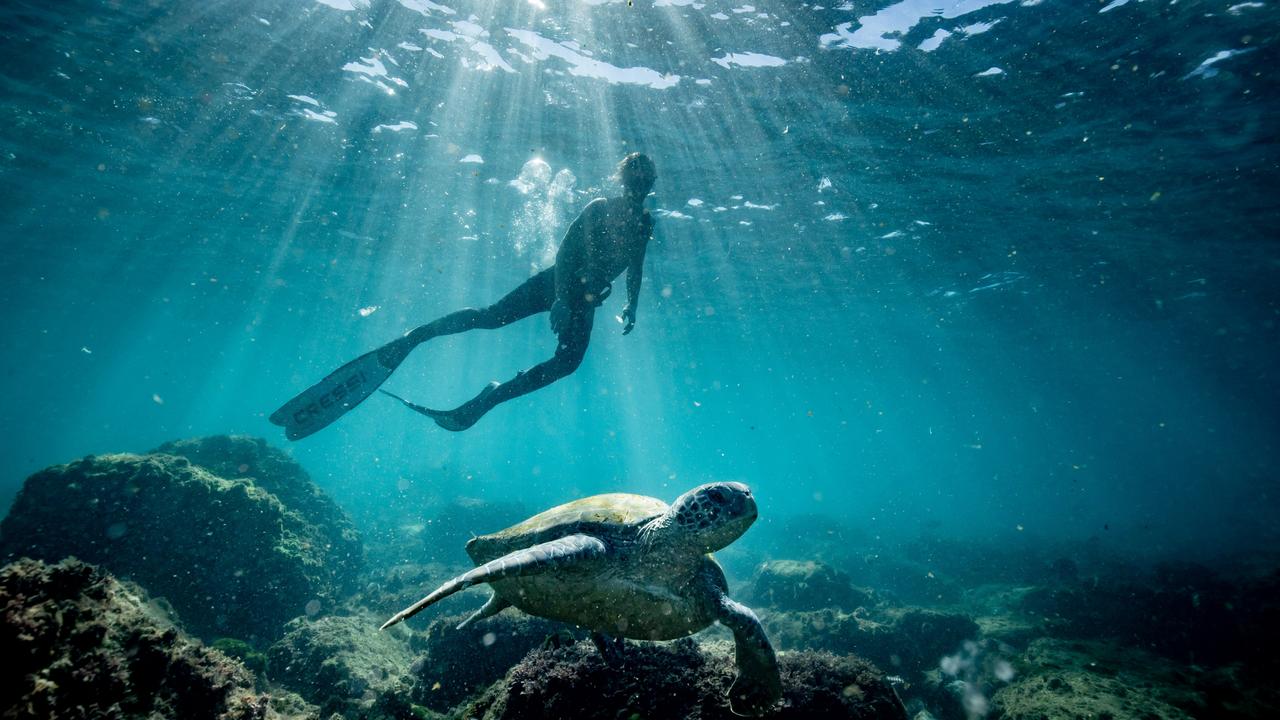Australia’s turtles love swimming, not our plastic bags in the sea
Winter won’t stop Australia’s sea turtles from swimming – they’ve been basking in the warm waters off northern NSW. But despite their idyllic lifestyle, these beauties face a human-made threat

READING LEVEL: GREEN
While surfers in wetsuits have been braving the freezing winter water in Australia’s south, turtles off the coast of far northern NSW have been lapping up the perfect conditions.
“Turt-ally awesome” temperatures of over 20C were recorded in the last week of July along most of the coast, including Cook Island — where these pictures were taken — which is off Fingal Head south of Tweed Heads.
That ocean temperature is well within the ideal temperature range* for the shelled sea creatures.
Australia is lucky to be home to six of the seven species of turtles in the world, including the green sea turtle, loggerhead turtles and the critically endangered hawksbill.

“For the first 15 years of their life, they’re basically travelling the world, going around the Pacific,” Cooly Eco Tours turtle dive instructor Georgie Pierce said.
“After that 15 years, they come back to where they hatched from, and when they reach sexual maturity* at the age of 35, they actually lay their eggs on the same beaches that they actually hatched on.”

Despite happily feeding off seagrass, jellyfish and macro-algae* every day, Australian turtles remain under threat.

“Turtles have a lot of threats, the biggest threat is plastic pollution because they do feed on jellyfish and a plastic bag looks super-similar to a jellyfish,” she said.
“This would be the cause of a lot of deaths for turtles. We’re lucky enough to be able to swim with the turtles (off Cook Island) all year round. Mating starts in October (and) November and then they start hatching around the beginning of January all the way through to April.”

POLL
GLOSSARY
- ideal temperature range: how warm the turtles like the water to be
- sexual maturity: old enough to mate
- macro-algae: seaweed
EXTRA READING
Forklift used to haul massive shark
New centre hosts reptiles and amphibians from across the globe
Aussies hatch sea creature survival plans
QUICK QUIZ
1. How many species of turtle call Australia home?
2. What do Australian turtles eat?
3. Why are turtles under threat?
4. How do they spend the first 15 years of their lives?
5. What time of the year do Australian turtles mate?
LISTEN TO THIS STORY
CLASSROOM ACTIVITIES
1. Plastic bag free
Australia has made some good gains in reducing single use plastic bags. What benefits are we seeing from this commitment to the environment?
–
–
–
What other things should we be committing to so as not to harm our marine life?
–
–
Time: allow 15 minutes to complete this activity
Curriculum Links: English, Science, Personal and Social, Critical and Creative Thinking
2. Extension
Write five fun facts you learnt about turtles after reading this Kids News article. Compare your answer to another classmate’s.
Time: allow 10 minutes to complete this activity
Curriculum Links: English, Personal and Social, Critical and Creative Thinking
VCOP ACTIVITY
Read this!
A headline on an article – or a title on your text – should capture the attention of the audience, telling them to read this now. So choosing the perfect words for a headline or title is very important.
Create three new headlines for the events that took place in this article. Remember, what you write and how you write it will set the pace for the whole text, so make sure it matches.
Read out your headlines to a partner and discuss what the article will be about based on the headline you created. Discuss the tone and mood you set in just your few, short words. Does it do the article justice? Will it capture the audience’s attention the way you hoped? Would you want to read more?
Consider how a headline or title is similar to using short, sharp sentences throughout your text. They can be just as important as complex ones. Go through the last text you wrote and highlight any short, sharp sentences that capture the audience.

